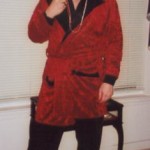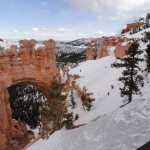On Monday, August 3, 2015, President Barack Obama and the Environmental Protection Agency released final rules designed to curtail coal-based power plant emissions. Called the Clean Power Plan, the goal is to reduced carbon emissions contributing to man-made climate change. The impact of this plan will surprise a lot of Americans.
The following video is only a little over 2 minutes and worth watching:
Reaction has been about what you might expect. The Republican candidates for president and their Republican colleagues in the House and Senate have falsely attacked the plan for the usual false reasons. The Democratic candidates and in Congress largely agree that the steps proposed are necessary to deal with the unequivocal science demonstrating humans are warming the climate system.
Media reporting of the Clean Power Act shows its critical importance. Time magazine says that the President is taking the lead on this “superwicked problem.” CNN says the President “unveils major climate change proposal.” To the New York Times this is a “crucial step on climate change.” Other media outlets also note the unprecedented action by the White House and EPA.
Of course, there are also the denial lobbyists saturating the blogosphere with anti-Clean Power Act rhetoric. All provide opinions based on a single negative “report” produced by, you guessed it, one of the denial lobbyist organizations in their network. That’s a common tactic of lobbyists – create a biased report and then get all your friends to cite your biased report as “unbiased.”
Meanwhile, the response from the scientific community has generally been positive, as might be expected given that nearly every climate scientist agrees that 100+ years of published science unequivocally demonstrates a need to address man’s contribution to climate change. There are some, like outspoken climate scientist James Hansen, who feel the Plan is merely a drop in the bucket and won’t in itself create significant progress in dealing with our changing climate.
Hansen is probably right.
So let’s assume that the Clean Power Plan is insufficient to deal with climate change….
[Read the rest on The Dake Page]
The above is a partial cross-post of a full article on The Dake Page. Please click on the link above to read further. Thanks.
David J. Kent has been a scientist for over thirty years, is an avid science traveler, and an independent Abraham Lincoln historian. He is the author of Tesla: The Wizard of Electricity and the e-book Nikola Tesla: Renewable Energy Ahead of Its Time. He is currently writing a book on Thomas Edison.
Follow me by subscribing by email on the home page. And feel free to “Like” my Facebook author’s page and connect on LinkedIn. Share with your friends using the buttons below.



 We’ve talked about several of the tactics used by climate deniers to intentionally mislead the public. This past week provided a prime example of one tactic – intentionally lying about what a study says. Let’s take a closer look at how this works.
We’ve talked about several of the tactics used by climate deniers to intentionally mislead the public. This past week provided a prime example of one tactic – intentionally lying about what a study says. Let’s take a closer look at how this works. Earlier this year I posted a series of articles explaining what scientific peer-review is, and what it isn’t. The series was very popular so I’ve decided to create this single post that links to all the previous ones.
Earlier this year I posted a series of articles explaining what scientific peer-review is, and what it isn’t. The series was very popular so I’ve decided to create this single post that links to all the previous ones. This week the Citizens’ Climate Lobby (CCL) held its 6th annual International Conference in Washington, DC. The keynote speaker was Dr. Katharine Hayhoe, an atmospheric scientist at Texas Tech University in Lubbock, Texas. In addition to being a climate scientist, Hayhoe is an evangelical Christian, which generally would be irrelevant to the discussion except that she, with her husband, pastor Andrew Farley, wrote
This week the Citizens’ Climate Lobby (CCL) held its 6th annual International Conference in Washington, DC. The keynote speaker was Dr. Katharine Hayhoe, an atmospheric scientist at Texas Tech University in Lubbock, Texas. In addition to being a climate scientist, Hayhoe is an evangelical Christian, which generally would be irrelevant to the discussion except that she, with her husband, pastor Andrew Farley, wrote  It should go without saying that when you deny reality long enough, eventually reality makes you look foolish. Climate deniers have been denying the science behind man-made climate change for so long that they have lost even the illusion of credibility. They have become their own worst enemy, and as such have put themselves on a path of complete irrelevancy.
It should go without saying that when you deny reality long enough, eventually reality makes you look foolish. Climate deniers have been denying the science behind man-made climate change for so long that they have lost even the illusion of credibility. They have become their own worst enemy, and as such have put themselves on a path of complete irrelevancy. Book Review: The People’s Republic of
Book Review: The People’s Republic of  The Puppet Suit
The Puppet Suit On
On  On
On  And here on
And here on 






